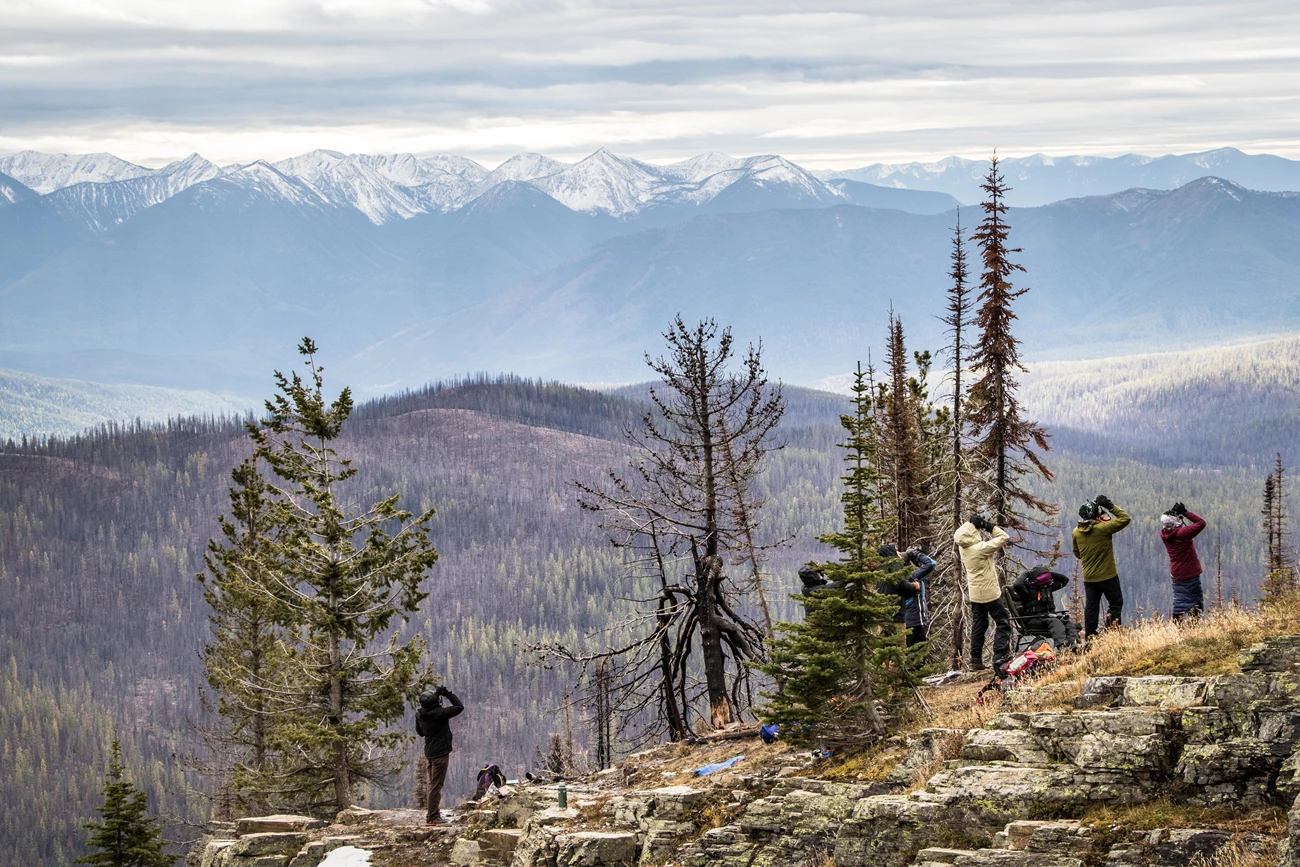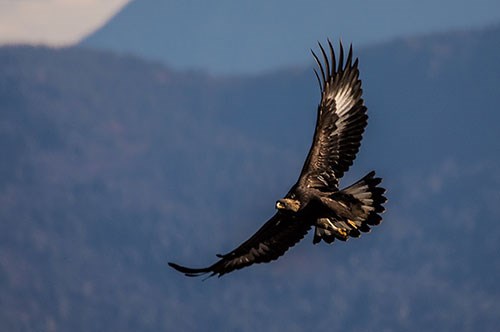
NPS/Renata Harrison
One of the key components of this research project is to document the number of golden eagles that pass through each fall. Due to notable declines of migrating golden eagles at Hawk Watch sites outside of the park, resource managers want to identify any changes to golden eagle numbers migrating through the park, near the Continental Divide. This important North American migration route cuts directly through Glacier National Park, yet little is known about current golden eagle migration trends.
Golden eagles face a variety of challenges. Environmental contaminants (especially lead), habitat loss, climate change, and declines in prey species are some of the current threats affecting golden eagles and contributing to their declining numbers. The Hawk Watch Citizen Science Program is critical in documenting any changes to golden eagle numbers along the Rocky Mountain migration route. By recording sex, age, color morph, behavior, and environmental conditions for golden eagles and other raptors, we can get a better picture of long-term migration trends.

NPS/Daniel Lombardi
Glacier's 2024 Mount Brown Hawk Watch Program
Come join park biologists and learn how to identify and count migrating raptors. Educators from Montana Wild Wings Recovery Center will also be on site with live raptors from 12 to 2 pm to provide close-up looks at some of the raptor species that migrate past Mount Brown. Biologists, park staff, and volunteers will be on hand to answer questions about the integral role of raptors in our ecosystems, the risks they face, and why Glacier has started the Mount Brown Hawk Watch Program.
- Date: Saturday October 5th, 2024
- Time: 11:00 a.m. to 3:00 p.m. near Lake McDonald Lodge
- Location: The event will begin at the Golden Eagle interpretive sign near Jammer Joe’s parking lot.
- Requirements: Participants should bring binoculars and prepare to count Golden Eagles on their annual migration south past Mount Brown. Attendees need not stay for the whole time and registration is not required.
- Volunteers can also hike to an observation point just below Mount Brown Lookout. People interested in hiking up Mount Brown should call or e-mail the Glacier Citizen Science Office for hike times and additional details.
Last updated: September 12, 2024
